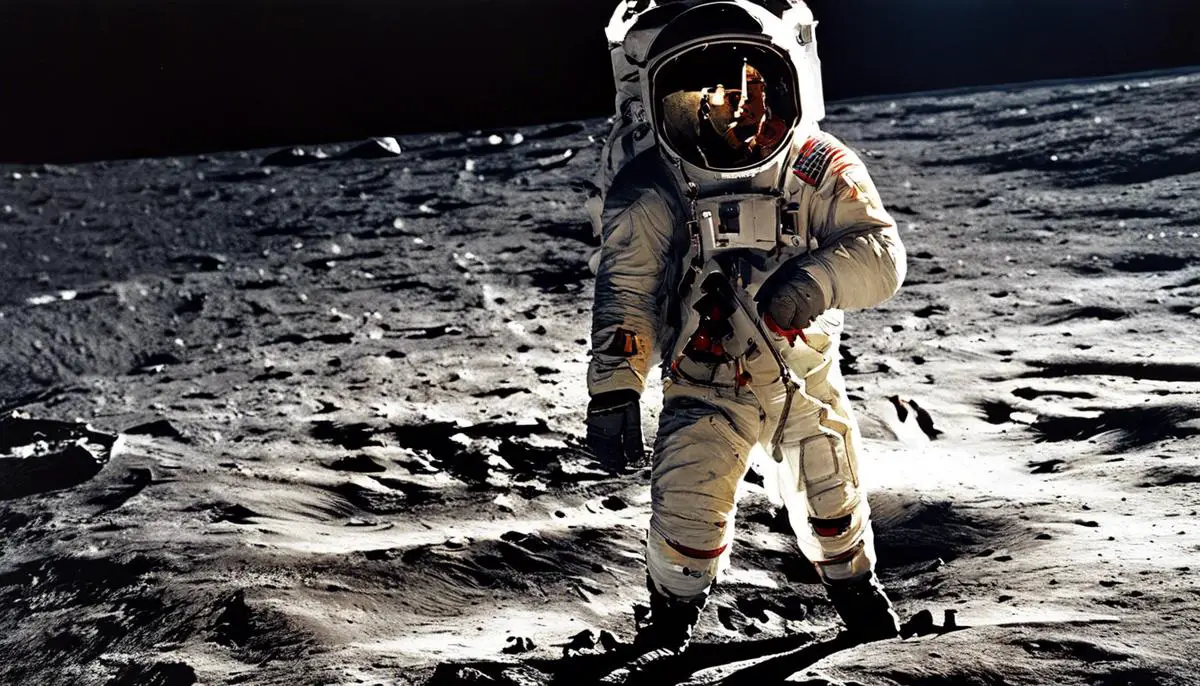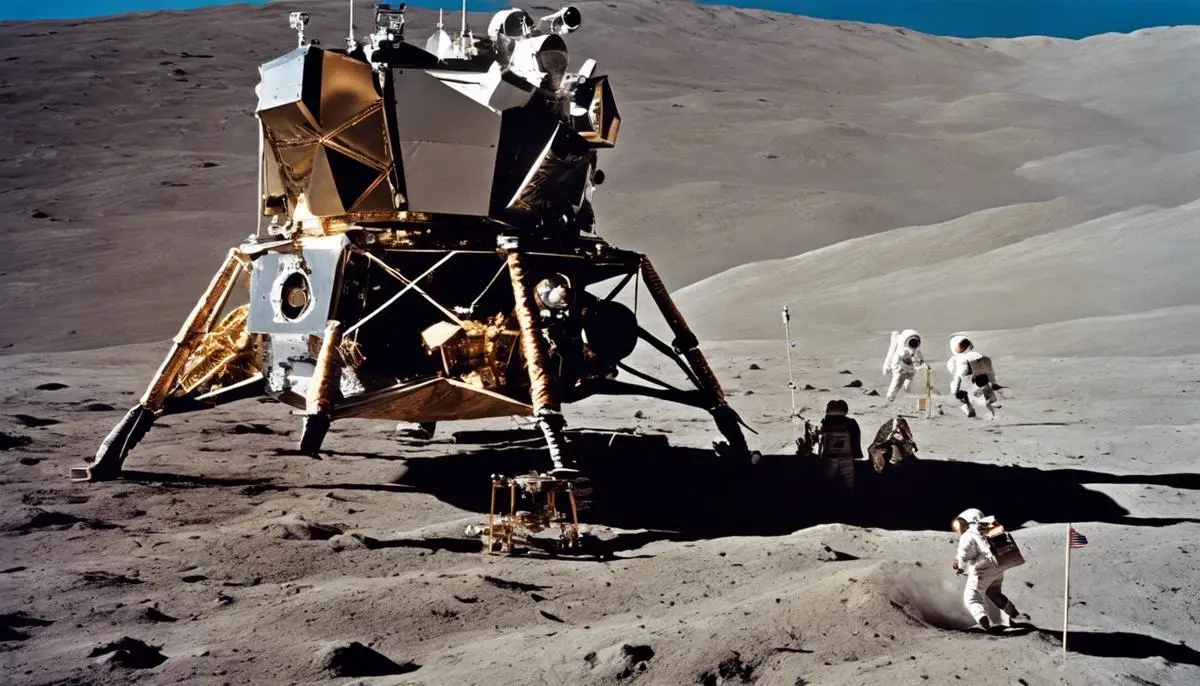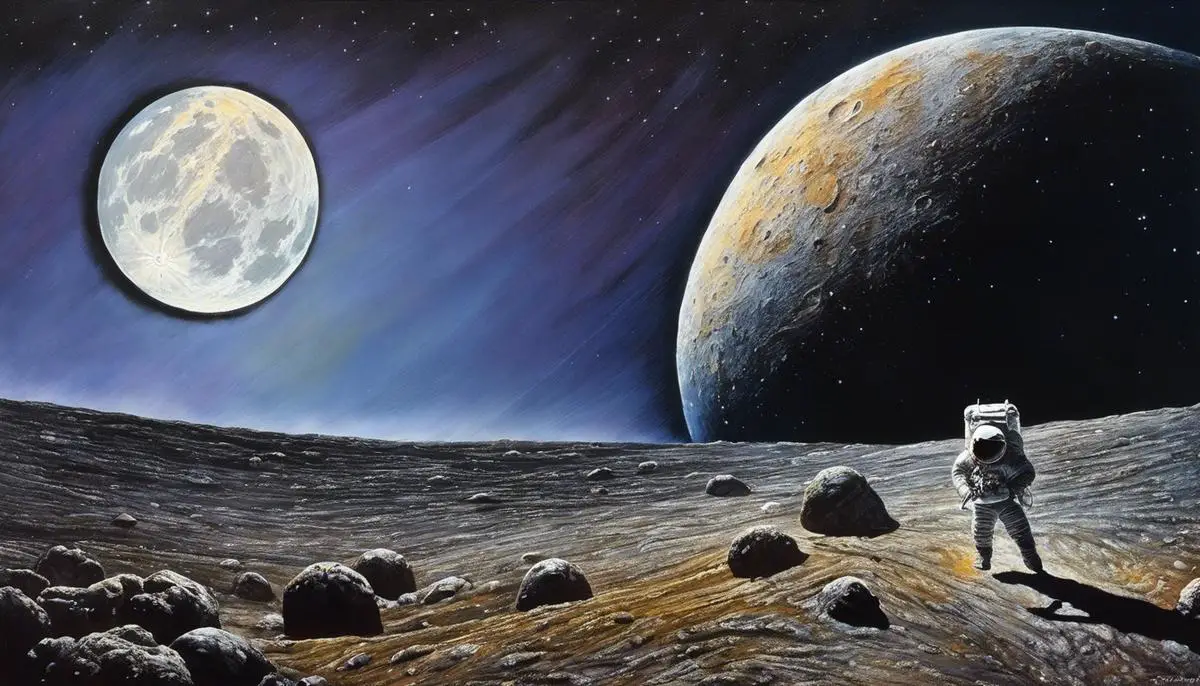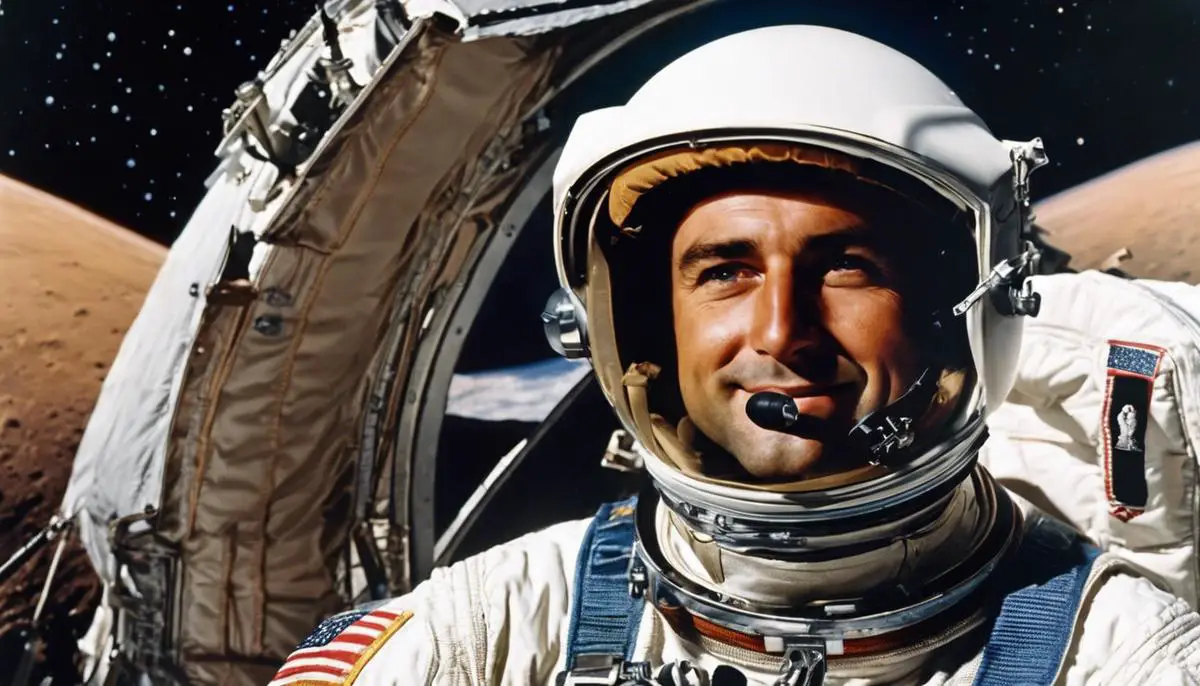Alan Bean’s legacy etches him in history as both an astronaut and an artist, carving a unique place in the annals of American space exploration and artistry. Born in Wheeler, Texas in 1932, Bean’s early life was marred by the challenges of the Great Depression but powered by an unyielding spirit of optimism and ambition. A look into his foundational years, including his educational background in naval science, his tenure as a test pilot and astronaut training at NASA, reveals the stepping stones that led him to be the fourth man on the moon. His participation in the Apollo 12 mission was not just an extraordinary personal feat but also a significant step for lunar science. The lasting influence of his experiences under the vast expanse of space permeated his later artistic endeavors, rendering his work a treasured confluence of scientific achievement and cultural representation.
Contents
Early Life and Training of Alan Bean
A multitude of factors deserve consideration when delving into the intricacies of lunar exploration and the consequential evolution of space science. One particular element to study in this vast constellation of elements is the early life and training of astronauts, specifically Alan Bean. The life and accomplishments of Alan Bean serve as an essential proof of this aspect, his progression from a small town child to an Apollo 12 astronaut, and as the fourth human to walk on the moon, is a journey enriched by unusual forethought, perseverance, and training.
Alan Bean’s early life in Wheeler, Texas, though seemingly distant from the twinkling stars and vast expanse of the cosmos, laid the crucial foundation for his future voyages. Born in 1932, Bean harbored a growing fascination for flight and aeronautical adventure fostered by a mixture of innate curiosity and the period’s glamour of flight.
The crux of his formative exploration transpired during his years at the University of Texas at Austin, where Bean earned a bachelor’s degree in Aeronautical Engineering in 1955. It was here that his fascination transformed into a profound understanding of the principles of flight and aerospace maneuvering.
More than merely academic prowess, Bean’s early life allowed him to develop the vital set of skills and traits necessary for an astronaut; resilience, tenacity, and an unfaltering spirit of adventure. The influence of these elements of his persona became evident in 1956 when Bean joined the United States Navy and was subsequently stationed at a flight training base. His years in the Navy established a well-rounded perception of aviation operations, a perspective transferred adeptly to his subsequent astronaut training at NASA.
Upon his selection as an astronaut in 1963, Bean embarked upon the intricate and intensive training that would eventually enable him to contribute significantly to lunar exploration. His training involved everything from theoretical studies about celestial bodies to practical simulations of lunar surface operations; every step meticulously designed to facilitate easy adaptation to the extraterrestrial environment.
The apogee of Bean’s journey came with Apollo 12, NASA’s second manned mission to the moon in 1969. His knowledge, training, and life experiences converged, and Bean played a pivotal role in the mission. His responsibilities, including navigating precise maneuvers, collecting invaluable rock samples from the moon’s surface, and even deploying various experiments, proved essential for the mission’s success and the advancement of lunar exploration.
Alan Bean’s contributions didn’t end with the Apollo 12 mission. His post-lunar explorative operations, communications enhancement, and subsequent work as a space artist carried his journey forward, enriching the realm of lunar exploration.
In conclusion, the exploration of the stars was not so far removed from the dusty plains of Wheeler, Texas, or the rigorous training of the United States Navy. Not for Alan Bean. Every chapter of his life played an instrumental role in shaping him for his lunar adventure, and ultimately, his contributions to the realm of lunar exploration. Indeed, Alan Bean’s early life and training is not just a personal journey but a testament to the immense potential of dedication, mental fortitude, and meticulous preparation.

Apollo 12 Mission: Bean’s Lunar Exploration
Significant Outcomes of Alan Bean’s Participation in the Apollo 12 Mission
Alan Bean’s pivotal role in the Apollo 12 mission of November 1969, serving as the Lunar Module Pilot, stands as an epitome of human exploration, and the scientific and technological advancements of the era. The outcomes associated with Bean’s participation in this mission are multilayered, encompassing extensive knowledge extraction about the lunar surface, technological progression, and inspiration for future generations.
The most concrete outcome of Bean’s lunar exploration was the accumulation of a remarkable array of lunar samples. Together with mission commander Pete Conrad, Bean collected approximately 34 kg of lunar surface material. These samples, rich in basalts and materials from the lunar interior, have served as invaluable resources, and continue to provide insights into the geological evolution of the moon. Their findings not only revolutionized our understanding of our celestial neighbor but have profoundly influenced theories of planetary formation and evolution.
Additionally, Bean’s contribution to deploying the Apollo Lunar Surface Experiments Package (ALSEP) substantiated the mission’s scientific objectives. The ALSEP, an assemblage of interconnected scientific instruments, was designed to monitor seismic activity, solar wind, and various other lunar environmental metrics. The data obtained, which were transmitted back to Earth for over seven years, led to groundbreaking revelations about the moon’s interior structure, composition, and meteoritic impact frequency.
Beyond these explicit scientific outcomes, Bean’s engagement in the Apollo 12 mission played a crucial role in the maturation of space exploration technology. The mission demonstrated the feasibility and safety of precision lunar landing, which fortified the confidence in subsequent Apollo missions and paved the way for continued advancements in space technology.
The Legacy of Alan Bean
Bean’s legacy transcends his extraordinary accomplishments as an astronaut. His later career as a space artist offered him a unique platform to communicate his experiences to the public, combining the allure of art with the intrinsic human fascination for space. Bean’s detailed portrayals of lunar landscapes and astronaut activities, heavily influenced by his first-hand experiences during the Apollo 12 mission, have reached a broad audience and helped solidify public engagement with space exploration.
Impressively, Bean’s legacy extends into the domain of education and inspiration. By retelling his story and sharing the insights gained during his time at NASA, he has inspired numerous individuals to aim for careers in science, technology, engineering, and math (STEM) fields. In essence, Alan Bean became the embodiment of exploration, a testament to the power of curiosity, resiliency, and pursuit of knowledge.
In totality, the outcomes and legacy of Alan Bean’s tenure in the Apollo 12 mission are far-reaching. His contributions have catalyzed scientific advancement, inspired subsequent generations, and opened new avenues for space explorations. Indeed, through the prism of his life, we can duly appreciate the harmonious welding of science, adventure, and art, a quintessential exemplar of life-long dedication and passion for exploration.

Post-Moon Career and Influence on Space Art
After the completion of his galactic expedition, Alan Bean embarked on a singular professional journey unlike any other astronaut. He established an artistic career driven by his lunar expedition aspirations and experiences. His employment of art as a communication tool resonated with all—its ethos found roots in his commitment to illuminate the narratives of lunar exploration that were often elusive to the public view.
The Astronaut turned artist committed himself to sharing his first-hand experiences beyond Earth’s atmosphere. Bean’s unique perspective of these otherworldly vistas brought about an exceptional style of painting that conveyed the unseen, untold aspects of moon missions—interpreted through the lens of artistic expression. His technique was a synergistic blend of scientific precision and artistic interpretation, essentially bridging the gap between these two disciplines.
Bean’s paintings were not mere pretty pictures; they were scientifically informed renderings of lunar landscapes and astronaut activities. He integrated actual moon dust and pieces of his Apollo mission patches into his painting materials. This imbued his artworks with a physical connection to the moon, underscoring the authentic recounting of his experiences.
Alan Bean’s art encapsulated the spirit of exploration and wonder, simultaneously fostering a deeper understanding of the scientific achievements of space missions. His style of incorporating his mission artifacts has sparked a new genre in the art realm—space art. This genre serves as a dynamic platform for presenting intricate and complex scientific concepts in an accessible, engaging manner.
The paintings went beyond the intended audience of the traditional art world. They gained traction in educational platforms, found their place in science museums, and became materials in STEM education, encouraging scientific curiosity and exploration. Bean’s rare capacity to convey the unimaginable in an ridt and comprehendible way undoubtedly added a new dimension to scientific learning.
Moreover, Bean’s work prompted other astronauts and scientists to try their hand at presenting their experiences and discoveries through the creative lens. This has led to the growth of a unique community that utilizes art to communicate scientific inquiry and astronautic exploration.
Alan Bean’s legacy goes beyond his physical presence on the moon; his post-moon life invigorated the intricate interweaving of science and art, affecting how we perceive, learn, and communicate about space, exploration, and our place in the vast celestial expanse. By embracing both the scientist and artist within him, Bean left an indelible mark impacting various social spheres, from education to art to science—a testament to the infinite reach his life and career have had on humanity.

Undeniably, Alan Bean, as the fourth man on the moon, played a pivotal role in advancing our understanding of lunar science. His active participation in the Apollo 12 mission significantly added to the corpus of knowledge about space and the moon. However, Bean’s journey did not culminate with moon dust beneath his boots, but instead, emboldened him towards a new path of expression – art. Bean’s post-lunar journey as an artist, manifested his experiences into a series of extraterrestrial aesthetes, integrated with traces of moon dust and pieces of his space mission patches. His artistic endeavor served as a symbolic bridge, harmonizing the realms of space science and art, thereby enriching humanity’s collective cultural and scientific aspirations. Bean’s remarkable life journey and enduring influence affirm that his footprints aren’t just on the moon, but also etched deeply in the heart of human exploration and expression.
